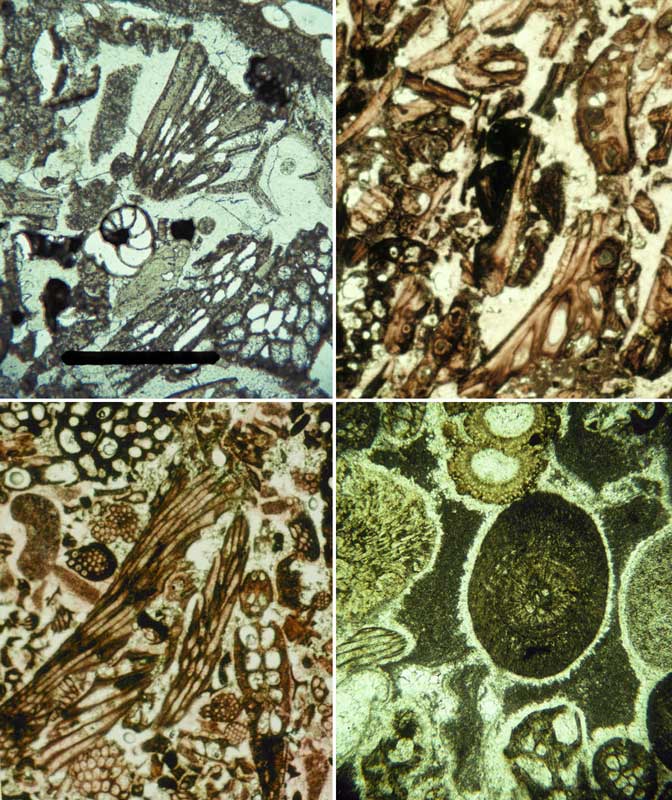
New Zealand Cenozoic limestones formed in a temperate climate, and therefore lack tropical elements such as corals. These microscope photographs illustrate different types of limestone formed of the remains of calcareous organisms that lived on the sea floor. Colourless carbonate cement fills the pore spaces between skeletal fragments.
Top left: Potikohua Limestone (Buller). Fragments are mainly bryozoa, with scattered foraminifera.
Top right: Te Aute Limestone (Hawkes Bay). Composed mainly of shell fragments and barnacle plates.
Bottom left: Ōtorohanga Limestone (Waikato). Mainly bryozoa and small foraminifera.
Bottom right: Orahiri Limestone (Waikato). Echinoid spine (centre) with bryozoa and foraminifera.
Te whakamahi i tēnei tūemi
Private collection
Photograph by Cam Nelson
This item has been provided for private study purposes (such as school projects, family and local history research) and any published reproduction (print or electronic) may infringe copyright law. It is the responsibility of the user of any material to obtain clearance from the copyright holder.













Tāpiritia te tākupu hou